Colon cancer is one of the most common worldwide, and is strongly linked to lifestyle choices
A 42-year-old Delhi-based MCD official ignored rectal bleeding for almost a year. He also overlooked unexplained weight loss, and the fact that he was fatigued all the time. Finally, he was referred by his doctor for a colonoscopy. The test revealed a tumour, which was found to be cancerous.
 “My patient couldn’t believe that he has been diagnosed with colorectal cancer (CRC), commonly known as colon cancer or bowel cancer. He kept asking, ‘Why me? I have always been very fit and healthy’,” says Shyam Aggarwal, senior consultant and chairman, department of medical oncology, Sir Ganga Ram Hospital, New Delhi. “But he was a smoker and consumed alcohol almost every evening. Both clear risk factors for CRC,” Dr Aggarwal says.
“My patient couldn’t believe that he has been diagnosed with colorectal cancer (CRC), commonly known as colon cancer or bowel cancer. He kept asking, ‘Why me? I have always been very fit and healthy’,” says Shyam Aggarwal, senior consultant and chairman, department of medical oncology, Sir Ganga Ram Hospital, New Delhi. “But he was a smoker and consumed alcohol almost every evening. Both clear risk factors for CRC,” Dr Aggarwal says.
Here’s the good news and the bad news: CRC is a form of cancer that is heavily dependent on your lifestyle—your physical activity levels, your diet, how much you drink, and whether you smoke or not. Which means preventing it is largely in your hands.
“Yet its numbers are rising rapidly worldwide, and unfortunately in India too,” Dr Aggarwal says. The World Health Organization GLOBOCAN 2008 report, the latest study on this, says the estimated incidence level in India in 2008 was 36,476, and is expected to rise to 49,122 by 2013.
“CRC develops due to uncontrolled cell growth in the colon or rectum (parts of the large intestine) and the reasons that lead to it are rather straightforward,” explains Ashok Vaid, chairman, division of medical and paediatric oncology, haematology and bone marrow/stem cell transplant, Medanta–The Medicity, Gurgaon. “While there is some genetic component, close relatives like parents, brothers, sisters, or children of a person with a history of colon cancer are somewhat more likely to develop this disease themselves, especially if the relative had the cancer at a young age. But it’s mainly related to changing lifestyles and eating habits.”
A diet low in fibre and vegetables is one of the leading culprits.
 According to Rajinder Kaur Saggu, consultant surgical oncologist, Indraprastha Apollo Hospital, New Delhi, CRC was the third most common cancer worldwide in men (663,904 cases, 10% of the total cancers) and the second in women (571,204 cases, 9.4% of the total cases) in 2008.
According to Rajinder Kaur Saggu, consultant surgical oncologist, Indraprastha Apollo Hospital, New Delhi, CRC was the third most common cancer worldwide in men (663,904 cases, 10% of the total cancers) and the second in women (571,204 cases, 9.4% of the total cases) in 2008.
“The original Indian meal, which is naturally high on fibre, ensured people didn’t get colon cancer,” says Dr Saggu. “Deviating from the Indian cereal-based diet and adopting a Western diet that is more focused on preservatives-laden, low-fibre junk is proving disastrous for our health,” she says. The average Indian diet is heavy in vegetables, pulses and wholegrain like atta.
In India, CRC ranks as the sixth most common cancer across age groups. “This is probably because of the traditionally vegetarian diet that we consume,” says Dr Vaid. “But in recent years this has undergone a massive change, and now we see many more cases of CRC coming up. As per WHO GLOBOCAN, in India, 42,000 cases are expected to be diagnosed in 2012.”
Diet demons
Diets high in vegetables, fruits and wholegrains are a clear safeguard, and linked to a decreased risk of colorectal cancer. According to the study, Fruit, Vegetables, Dietary Fiber, And Risk of Colorectal Cancer by Paul Terry, et al, published in the Journal of National Cancer Institute in 2001, some clinical trials show that cereals, especially wheat bran, contain substances such as fibre, phytic acid, various phenolic compounds, lignins, and flavonoids that might lower the risk for colorectal cancer.
On the other hand, diets that contain a lot of animal fat and red meat, especially processed meats like ham, sausages or bacon, can increase the risk of developing bowel cancer.
“The greatest increase in risk seems to be for people eating two or more portions of red or processed meat a day,” says Dr Saggu. “No link has been found between eating poultry such as turkey and chicken, and an increased risk of this cancer.”
A study published in the February 2007 edition of the International Journal of Cancer states that there is a 15% increase in risk of colon or rectal cancer with an increase of 100g of alcohol intake per week. The study adds that high alcohol intake was significantly associated with increased risk of colon and rectal cancer.
“The more you drink, the more the risk increases,” says Dr Aggarwal. “This may be due to the fact that heavy alcohol users tend to have low levels of folic acid in the body.”
Radheshyam Naik, head, medical oncology and stem cell transplantation at the HCG Bangalore Institute of Oncology Speciality Centre, Bangalore, explains further, “The carcinogenic effects of alcohol include immunodepression, activation of liver procarcinogens, and changes in bile composition, as well as increased tissue nitrosamine levels (due to nitrosamine content of alcoholic beverages).”
Other factors
The cancer is also more common in people who have smoked cigarettes for a long time (20 years or more, says Dr Saggu). “Smoking is a well-known cause of lung cancer, but some of the carcinogens in smoke dissolve in saliva and if swallowed, can cause digestive system cancers like colorectal cancer,” says Dr Saggu.
Being overweight and inactive also seems to be a risk factor for this cancer, and raises the probability of developing the disease in both men and women, though the link is stronger in men.
“People who have had ulcerative colitis disease (disease of the lining of the bowel) for a long time also have an increased risk of developing bowel cancer,” says Dr Saggu. “Individuals with a history of diabetes or frequent constipation are also at an increased risk for this cancer.”
Easy detection
Despite its high incidence, colon cancer is one of the most easily detectable and, if found early enough, also one of the most treatable forms of cancer.
“This is one cancer that awareness alone can help beat. The problem is that its symptoms are often confused with haemorrhoids, piles or even irritable bowel syndrome, leading to late detection,” says Dr Aggarwal. “That is why screening can save lives. It can find precancerous polyp (abnormal growths in the colon or rectum) so that they can be removed before turning into cancer, and also help catch the cancer at an early stage, when treatment usually leads to a cure.”
The probability of a cure decreases from 90% in the first stage to 30% in the terminal stage (stage 4), according to the experts interviewed. They recommend that people over 40 years be screened regularly for this.
“Colorectal cancer initially starts in the lining of the bowel and if left untreated, can grow into the muscle layers underneath, and then through the bowel wall,” says Dr Saggu, adding, “Cancers that are confined within the wall of the colon are often curable with surgery.”
Modern technology ensures that less than 5% of all colorectal cancer patients require a colostomy, the surgical construction of an artificial excretory opening from the colon, according to Dr Aggarwal.
Stay alert
While some of these symptoms seem like commonplace ailments, see a doctor if they recur often, in combination, or are persistent problems.
- Diarrhoea or constipation lasting more than two weeks, blood or mucous in stool
- Pencil stools (thinner than usual) or feeling as if you cannot empty your bowels completely
- Anaemia
- Abdominal swelling or persistent abdominal pain or discomfort
- Unexplained weight loss
- Extreme tiredness, or a dizzy feeling
- Flatulence
- Vomiting
The tests
The high-sensitivity faecal occult blood test (FOBT), which checks for hidden blood in three consecutive stool samples, should be done every year.
Flexible sigmoidoscopy, where doctors use a flexible, lighted tube (sigmoidoscope) to look at the interior walls of the rectum and part of the colon, should be done every five years.
Colonoscopy, where physicians use a flexible, lighted tube (colonoscope) to look at the interior walls of the rectum and the entire colon (during this procedure, samples of tissue may be collected for closer examination, or polyps may be removed), should be done every 10 years.
Source: LiveMint
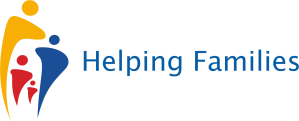 The findings were endorsed by Indian Society for Assisted Reproduction and Asia Pacific Initiative on Reproduction (ASPIRE), Merck Serono said in a release here today.
The findings were endorsed by Indian Society for Assisted Reproduction and Asia Pacific Initiative on Reproduction (ASPIRE), Merck Serono said in a release here today.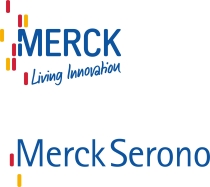 strategic collaboration is the first-of-its-kind between a biopharmaceutical company or division and a biopharmaceutical services provider, creating a comprehensive process that integrates the expertise and experience from both organizations into a single, well-aligned clinical development engine.
strategic collaboration is the first-of-its-kind between a biopharmaceutical company or division and a biopharmaceutical services provider, creating a comprehensive process that integrates the expertise and experience from both organizations into a single, well-aligned clinical development engine.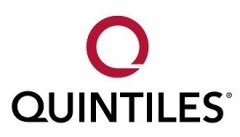

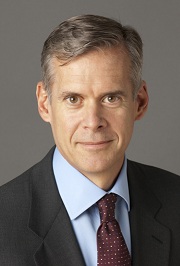
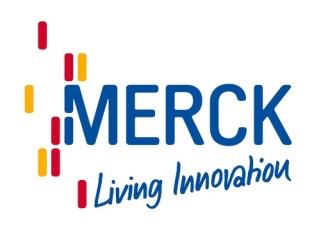
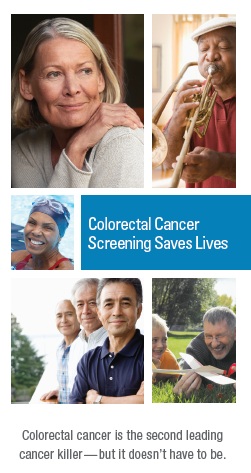
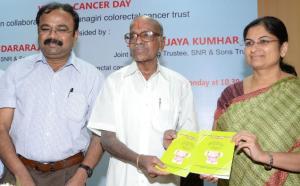

 “My patient couldn’t believe that he has been diagnosed with colorectal cancer (CRC), commonly known as colon cancer or bowel cancer. He kept asking, ‘Why me? I have always been very fit and healthy’,” says Shyam Aggarwal, senior consultant and chairman, department of medical oncology, Sir Ganga Ram Hospital, New Delhi. “But he was a smoker and consumed alcohol almost every evening. Both clear risk factors for CRC,” Dr Aggarwal says.
“My patient couldn’t believe that he has been diagnosed with colorectal cancer (CRC), commonly known as colon cancer or bowel cancer. He kept asking, ‘Why me? I have always been very fit and healthy’,” says Shyam Aggarwal, senior consultant and chairman, department of medical oncology, Sir Ganga Ram Hospital, New Delhi. “But he was a smoker and consumed alcohol almost every evening. Both clear risk factors for CRC,” Dr Aggarwal says. According to Rajinder Kaur Saggu, consultant surgical oncologist, Indraprastha Apollo Hospital, New Delhi, CRC was the third most common cancer worldwide in men (663,904 cases, 10% of the total cancers) and the second in women (571,204 cases, 9.4% of the total cases) in 2008.
According to Rajinder Kaur Saggu, consultant surgical oncologist, Indraprastha Apollo Hospital, New Delhi, CRC was the third most common cancer worldwide in men (663,904 cases, 10% of the total cancers) and the second in women (571,204 cases, 9.4% of the total cases) in 2008.
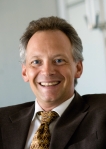
 Under the terms of the deal, Merck Serono will gain exclusive worldwide rights to develop and commercialize Sym004, while Symphogen will receive from Merck an upfront payment of some $28.5 million as well as payments for clinical development, regulatory and sales performance milestones. Symphogen will also be eligible for potential royalties on net worldwide sales.
Under the terms of the deal, Merck Serono will gain exclusive worldwide rights to develop and commercialize Sym004, while Symphogen will receive from Merck an upfront payment of some $28.5 million as well as payments for clinical development, regulatory and sales performance milestones. Symphogen will also be eligible for potential royalties on net worldwide sales.
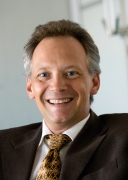

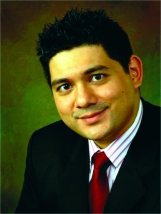
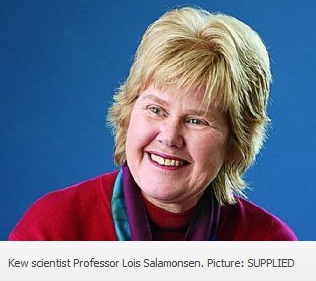


 Notes to editors:
Notes to editors: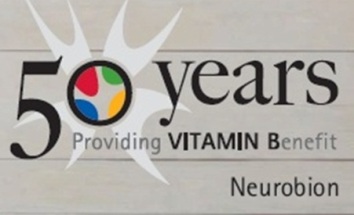 the 50th anniversary of Neurobion®, one of the first Vitamin B combinations worldwide. On this occasion, the company and its affiliates worldwide will organize educational activities and information sessions for healthcare professionals to draw attention to the main symptoms and side effects of a lack of B vitamins.
the 50th anniversary of Neurobion®, one of the first Vitamin B combinations worldwide. On this occasion, the company and its affiliates worldwide will organize educational activities and information sessions for healthcare professionals to draw attention to the main symptoms and side effects of a lack of B vitamins. Geneva, Switzerland, June 6, 2012 – Merck Serono, a division of Merck KGaA, Darmstadt, Germany, and Dr. Reddy’s Laboratories Ltd., Hyderabad, India, announced today a partnership to co-develop a portfolio of biosimilar compounds in oncology, primarily focused on monoclonal antibodies (MAbs). The partnership covers co-development, manufacturing and commercialization of the compounds around the globe, with some specific country exceptions.
Geneva, Switzerland, June 6, 2012 – Merck Serono, a division of Merck KGaA, Darmstadt, Germany, and Dr. Reddy’s Laboratories Ltd., Hyderabad, India, announced today a partnership to co-develop a portfolio of biosimilar compounds in oncology, primarily focused on monoclonal antibodies (MAbs). The partnership covers co-development, manufacturing and commercialization of the compounds around the globe, with some specific country exceptions. space. Merck began exploring the opportunity last year to assess how it could capitalize on its expertise in biopharmaceuticals and its growing presence in key markets including select Emerging Markets. Earlier this year, it set up a dedicated biosimilars unit that will be based in the Canton of Vaud in Switzerland, where the main biologics manufacturing facilities of Merck Serono are located. The investment required for this initiative is fully reflected in the guidance provided for Merck Serono’s 2012 and mid-term financial performance, which was provided to the Capital Markets on May 15, 2012.
space. Merck began exploring the opportunity last year to assess how it could capitalize on its expertise in biopharmaceuticals and its growing presence in key markets including select Emerging Markets. Earlier this year, it set up a dedicated biosimilars unit that will be based in the Canton of Vaud in Switzerland, where the main biologics manufacturing facilities of Merck Serono are located. The investment required for this initiative is fully reflected in the guidance provided for Merck Serono’s 2012 and mid-term financial performance, which was provided to the Capital Markets on May 15, 2012. “Our expertise in developing, manufacturing and commercializing biopharmaceuticals gives us a clear advantage in the biosimilars field and the partnership with Dr. Reddy’s will bring their first-in-market experience in biosimilars, as well as their expertise in generics and Emerging Markets, to the table,” said Stefan Oschmann, Merck Executive Board Member and Chief Executive Officer of Merck Serono. “Sharing know-how, risks and rewards is the right approach to enter the emergent biosimilars market and will be a win-win for both parties. It further strengthens Merck Serono’s promise to live science and transform lives, by increasing access to quality medicines for patients and physicians, while also broadening the value offered to payers.”
“Our expertise in developing, manufacturing and commercializing biopharmaceuticals gives us a clear advantage in the biosimilars field and the partnership with Dr. Reddy’s will bring their first-in-market experience in biosimilars, as well as their expertise in generics and Emerging Markets, to the table,” said Stefan Oschmann, Merck Executive Board Member and Chief Executive Officer of Merck Serono. “Sharing know-how, risks and rewards is the right approach to enter the emergent biosimilars market and will be a win-win for both parties. It further strengthens Merck Serono’s promise to live science and transform lives, by increasing access to quality medicines for patients and physicians, while also broadening the value offered to payers.” G. V. Prasad, Vice-Chairman and CEO at Dr. Reddy’s Laboratories, commented: “We strongly believe that biosimilars is an important area of future growth and these products give us the opportunity to provide affordable and innovative medicines to patients across the globe. With the recent EMA and FDA guidance on biosimilars, it is clear that any significant player in the field will need strong biologics development, manufacturing and commercialization capabilities. Merck Serono’s and Dr. Reddy’s joint expertise in these fields makes for a powerful global partnership.”
G. V. Prasad, Vice-Chairman and CEO at Dr. Reddy’s Laboratories, commented: “We strongly believe that biosimilars is an important area of future growth and these products give us the opportunity to provide affordable and innovative medicines to patients across the globe. With the recent EMA and FDA guidance on biosimilars, it is clear that any significant player in the field will need strong biologics development, manufacturing and commercialization capabilities. Merck Serono’s and Dr. Reddy’s joint expertise in these fields makes for a powerful global partnership.”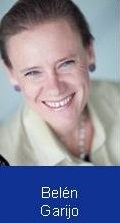 “We spent a lot of time with Brian talking about how we could make the Sports Walker more portable, compact and applicable to daily life,” said Florian Altmann, senior designer and project lead at IDEO. “The final prototype is a compelling example of the potential that exists when patients innovate to solve everyday challenges.”
“We spent a lot of time with Brian talking about how we could make the Sports Walker more portable, compact and applicable to daily life,” said Florian Altmann, senior designer and project lead at IDEO. “The final prototype is a compelling example of the potential that exists when patients innovate to solve everyday challenges.” school-going children and kids in India’s financial capital are taking to smoking in droves, according Dr. Pankaj Chaturvedi, Associate Professor, Surgical Oncology, Tata Memorial Hospital.
school-going children and kids in India’s financial capital are taking to smoking in droves, according Dr. Pankaj Chaturvedi, Associate Professor, Surgical Oncology, Tata Memorial Hospital.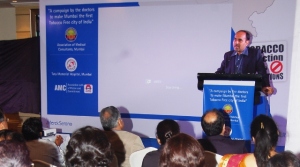 Said Dr. Chaturvedi, “Stress, Bollywood, fads and peer pressure all encourage people to take to smoking and this habit then continues due to its addictive nature. Even affluence is associated with smoking and drinking habits. Moreover, the interference posed by Tobacco industry in the form of pictorial warning, sale near schools, surrogate advertising, point of sale advertising and ministry decisions must be tackled effectively. Kids should not be exposed to such things as they are vulnerable and hence can easily fall prey to this habit.”
Said Dr. Chaturvedi, “Stress, Bollywood, fads and peer pressure all encourage people to take to smoking and this habit then continues due to its addictive nature. Even affluence is associated with smoking and drinking habits. Moreover, the interference posed by Tobacco industry in the form of pictorial warning, sale near schools, surrogate advertising, point of sale advertising and ministry decisions must be tackled effectively. Kids should not be exposed to such things as they are vulnerable and hence can easily fall prey to this habit.” infectious diseases in wrecking the health of millions of Mumbaikars. The greatest cause of most of these diseases is preventable — tobacco consumption. Tobacco alone is the leading cause of 90% of the diseases affecting the mouth, 80% of the COPD, 60% of heart diseases, 50% of cancers and 20% of all deaths. According to the National Cancer Institute, tobacco use is linked to 85% of head and neck cancer cases.
infectious diseases in wrecking the health of millions of Mumbaikars. The greatest cause of most of these diseases is preventable — tobacco consumption. Tobacco alone is the leading cause of 90% of the diseases affecting the mouth, 80% of the COPD, 60% of heart diseases, 50% of cancers and 20% of all deaths. According to the National Cancer Institute, tobacco use is linked to 85% of head and neck cancer cases.  It is difficult though not impossible to de-addict onself from this life-threatening habit. Dr. Chaturvedi said: “Those trying to quit smoking or consuming tobacco in any other form have to deal with a temporary difficult phase of withdrawal, but there are advantages in the long run like increase in longevity. With a strong will power and determination along with a two-minute advice rendered by a physician are the strongest cessation tools available to quit tobacco consumption. However, one must guard against alternatives like e-cigs which are highly unsafe. They contain pure nicotine in vapour form. Nicotine alone is a poisonous and addictive substance, capable of causing cancer. Also, there are currently no good drugs available though marketed aggressively by pharma companies.”
It is difficult though not impossible to de-addict onself from this life-threatening habit. Dr. Chaturvedi said: “Those trying to quit smoking or consuming tobacco in any other form have to deal with a temporary difficult phase of withdrawal, but there are advantages in the long run like increase in longevity. With a strong will power and determination along with a two-minute advice rendered by a physician are the strongest cessation tools available to quit tobacco consumption. However, one must guard against alternatives like e-cigs which are highly unsafe. They contain pure nicotine in vapour form. Nicotine alone is a poisonous and addictive substance, capable of causing cancer. Also, there are currently no good drugs available though marketed aggressively by pharma companies.”

